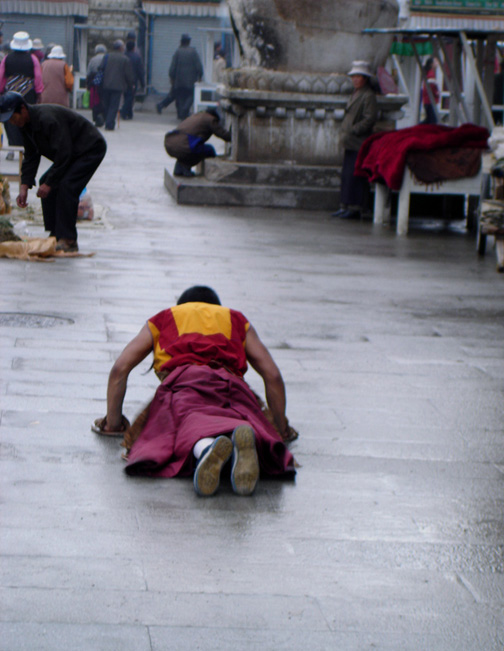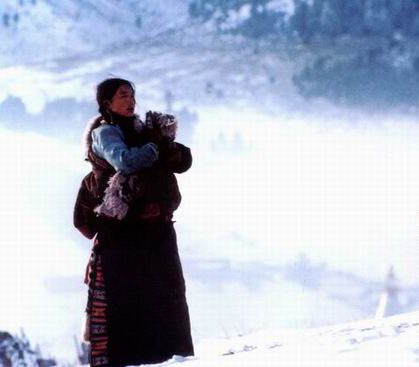
The Tibetan kowtow is a ritual in Tibetan Buddhism. Palms put together, Tibetans prostrate themselves on the ground, with the head, arms, and knees down on the ground, and move forward slowly, following every step with a kowtow. This is the way to express their most honest hearts to the Buddha, as they walk from their hometown to Lhasa. During the long journey, they wear wooden kneepads to protect their knees and fur to ward off dust on their faces, and kowtow every three steps until they arrive in Lhasa.
A kowtow rule is strictly practiced by Tibetans. First, stand straight, put the palms together, lift them above the head, and stride one step. Keeping the palms together and moving forward, the devotees stride the second step. For the third step, they move their palms to the front of their breast, and, as they stride forward, make their arms parallel to the ground with the centers of their palms facing the earth. Finally, they fall on their knees, lie down on the ground, touch it with their forehead, and then stand up and do it again. While doing the kowtow, they are supposed to patter the Six Words Sutra without stopping.

Kangrinboqe, meaning "the holy mountain" in Tibetan, is the highest peak of the Gangdese Mountains. It is one of the centers of Tibet Buddhism, Hinduism and the Bon. According to historical records, people have been worshipping it since 1,000 BC.
Tibetans believe that humans will suffer the six samsaras, (The eternal cycle of birth, suffering, death, and rebirth in Buddhism) and that there are two ways to avoid this painful ending. One is to become a Living Buddha by studying the sutra, which is obviously difficult. The other is Zhuan Shan (walking around the mountain), which, if done enough, can free believers from the six samsaras after death. In the eyes of believers, the Holy Mountain is Heaven in reality, even though it is definitely a hard, rocky Heaven.
It is a very long and tough journey from Lhasa to the Holy Mountain, with quicksand and bad roads on the way. Believers need to walk or kowtow along a road that is 57 km long and 4,800-5,723 m above sea level. The quick ones can finish it within a day, but most people will need two or three days to finish a round. Worshipping at the four temples around the Holy Mountain is a part of Zhuan Shan.
